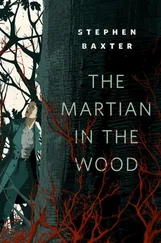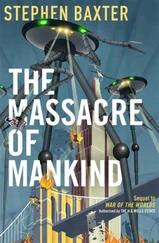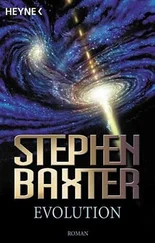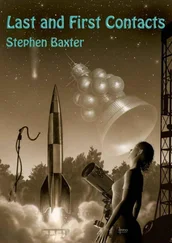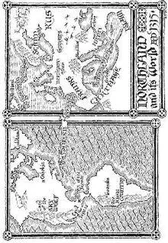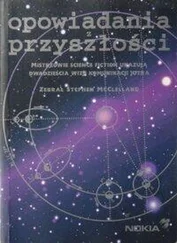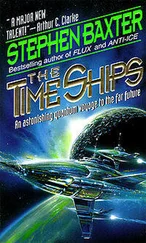We would have a much better idea of how likely it is that a world like Pandora will be found to host life if we had a clear idea about how life started on Earth itself. We have lots of plausible theories about that, but there’s no consensus.
The question puzzled Darwin himself. His theory of evolution gives a convincing account of the story of life once it got started, but he says nothing on how that start came about in the first place. An old idea had been that life could simply burst into existence through “spontaneous generation.” For instance it had been believed that rotting meat spontaneously generated maggots. By Darwin’s time such ideas were already under attack from scientists like Pasteur.
Darwin himself believed that for a whole life form to be generated from scratch was too much to swallow. Instead he mused about some kind of chemical evolution which might have led to the building blocks of life: “If we could conceive in some warm little pond, with all sorts of ammonia and phosphoric salts, light, heat, electricity, &c, present, that a protein compound was chemically formed ready to undergo still more changes…”
A century and a half later this is still the essential thrust of thinking about life’s origin. If life emerged spontaneously on the Earth (and later I’ll consider the alternative, that it came from somewhere else), then it must, by definition, have emerged from some prebiotic (non-living) medium. And since Darwin’s time we have made some progress in figuring out how this happened.
When did life form?
Traces of life have been found in very ancient rocks, for example in the old and stable heart of Australia. Life seems to have got going on Earth almost as soon as it could—as the planet cooled from its formation, and as it recovered from the tremendous bombardment it suffered in the late stages of the solar system’s genesis. This leads to optimism about finding life elsewhere; if it started up on this world as soon as it was physically possible, maybe it will start up everywhere.
As to where it first formed, Darwin’s suggestion of a warm little pond has been supplemented by ideas like the “deep hot biosphere,” prompted by the extraordinary discovery in the 1970s of life forms on the deep seabed, living in perpetual darkness, feeding not on sunlight but on heat and mineral seeps from volcanic vents. Some bacteria live even deeper, in the warm womb of the subsurface rocks. Some biologists suggest that even today most of Earth’s biomass may be down there in the rocks (and safe from the depredations of mankind, as I suggested in Chapter 2).
How did life form? With Darwin, we don’t imagine that complete organisms emerged fully formed from some warm little pond, but more basic components of life may have: cells, perhaps, or self-replicating material. Some scientists argue for cells first, some kind of containment, perhaps based on mineral structures, that gave pre-life an isolated environment in which to develop. Others, like Richard Dawkins, believe replication must have come first. After all, replication, the transmission of information from one generation to the next, along with the ability to construct that generation, is the very essence of life.
Baby steps towards working this process out were made through such experiments as that of Stanley Miller and Harold Urey in Chicago in 1952. They took a flask full of what was believed to have composed Earth’s early atmosphere—methane, water, ammonia, hydrogen—simulated lightning by passing electrical sparks through it, and were pleasantly surprised to find that a black sludge that collected in the bottom of the flask contained amino acids, constituents of proteins, which in turn are the building blocks of organic life like ours. This experiment itself turned out to be something of a dead end. An amino acid is a long way away from a protein in terms of complexity, and such acids are actually common in the universe, in interstellar molecular clouds. But still, this was conceptually at least a demonstration of how Darwin’s “warm little pond” might have worked to produce the materials of life from something non-living.
Where did life’s complexity come from, though? Recent years have seen the rise of new ideas of “self-organising systems,” in which the repeated application of a few simple rules can lead to great complication. Examples in mathematics include the famous “Mandelbrot set” of fractal theory, an object of literally infinite complexity generated by applying a simple mapping rule over and over. American biologist Stuart Kauffman has developed ideas on how life might have arisen, and biological complexity developed, from the self-organisation of “auto-catalytic sets,” networks of chemical reactions with self-sustaining feedback loops. A catalyst is a substance that helps a chemical reaction take place. An autocatalytic reaction doesn’t need an external catalyst to work but generates its own, so once it gets started it just keeps going, rather like a spreading fire. Kauffman argues that the propensity of the universe to support self-organisation and the resulting emergence of complexity is the fundamental cosmic property that underpins the origin of life.
Maybe these different threads of research will lead us eventually to a specific picture of how life like ours got started. Richard Dawkins has suggested that when we do figure out the answer, then rather like Darwin’s theory of evolution, it will turn out to be such a simple and compelling idea that in retrospect we will wonder how we missed it for so long.
But until we have that answer opinion will remain divided as to whether life is likely or unlikely, and whether it is rare in the universe or commonplace.
You can see that how likely you think it is that life emerged on a world like Pandora depends on whether you think the origin of life is likely or not. Francis Crick, the co-discoverer of DNA’s spiral structure, once wrote, “The origin of life appears at the moment to be almost a miracle, so many are the conditions which would have to have been satisfied to get it going.” But on the other hand the biologist Christian de Duve believes that life may be a “cosmic imperative,” its formation hard-wired into the laws of the universe, as much as are the formations of atoms and stars.
At least we can cling for comfort to the basic fact that life clearly was created at least once . Otherwise, we wouldn’t be here debating the subject. That proves that the formation is life is possible. Given that undeniable truth, there’s at least a basis for hope that it could happen elsewhere.
And one candidate answer to the question of how life began on Earth is: it didn’t begin here at all. It started up somewhere else, and travelled here…
The idea of “panspermia”—life propagating between the worlds, perhaps even between the stars—goes back to the Greek philosopher Anaxagoras who as long ago as the fifth century B.C. imagined “seeds of life” spreading through the universe. A modern panspermia hypothesis was developed in the 1970s by astronomers Fred Hoyle and Chandra Wikramasinghe, who thought the process might be so commonplace that new viruses might be delivered to the Earth by comets almost daily.
In the 1990s the study of the famous “Mars meteorite,” found in the Antarctic and presented by NASA as containing possible traces of Martian life, gave the idea renewed credibility. This rock had been blasted off the surface of Mars when an asteroid or comet struck, then drifted in space for perhaps millions of years, before happening to fall towards Earth. It endured a severely hot entry into Earth’s atmosphere before landing on the polar ice. Could this horrendously violent process transport, not just fossils as may have been present in the NASA meteorite, but living things between the worlds?
Читать дальше
